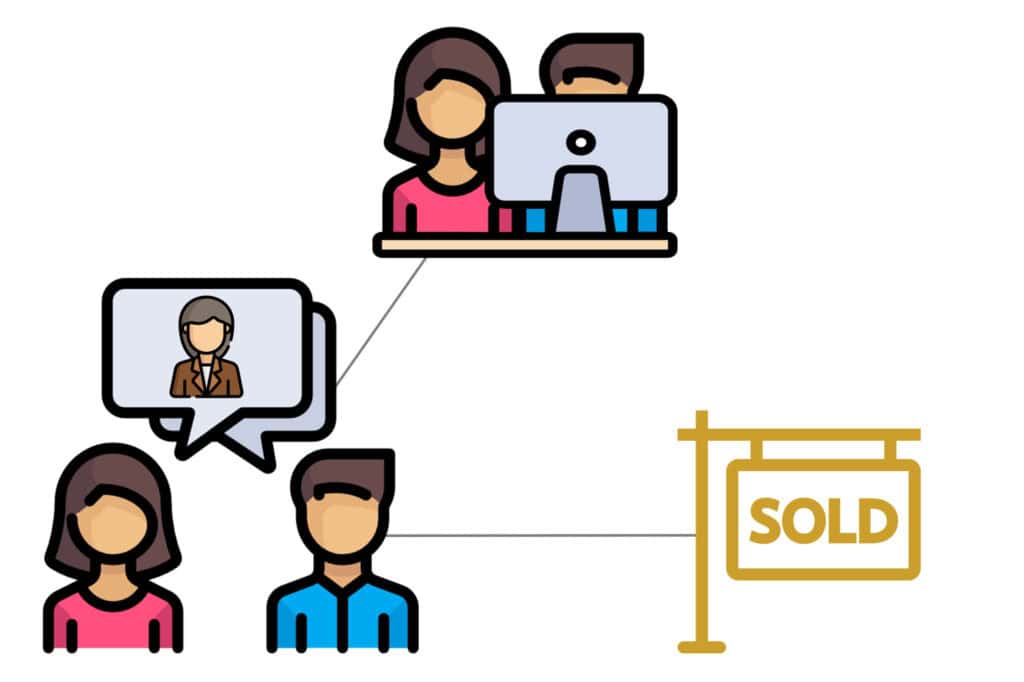In today’s digital-first real estate landscape, Multiple Listing Services (MLS) are the central nervous system of property transactions. Agents, brokers, and buyers depend on these platforms for accurate, real-time information. But as reliance on MLS technology deepens, so does the potential fallout from system disruptions. Cyberattacks, natural disasters, server failures, and even human error can jeopardize the availability and integrity of MLS data. In this high-stakes environment, a well-structured disaster recovery plan (DRP) is not just a precaution—it is a vital necessity.
Table of Contents
ToggleThe Business Impact of MLS Downtime
Every moment an MLS system is offline translates into lost opportunities and eroded trust. For real estate professionals, the inability to access listings, update property statuses, or communicate securely with clients can derail transactions in progress. In highly competitive markets, even a short disruption may prompt buyers and sellers to turn to alternative platforms or agents.
Beyond the immediate business interruption, prolonged downtime can also tarnish a brand’s reputation. Clients expect uninterrupted access and secure handling of their data. Any failure in service delivery raises concerns about the reliability of the system and the competence of the organization behind it. Rebuilding that trust can be a long and costly process.

Understanding Disaster Recovery in the Context of MLS
Disaster recovery is often confused with general data backups, but the two serve distinct purposes. While backups preserve data, disaster recovery ensures the swift restoration of operations after a failure. For an MLS system, that includes not only retrieving lost information but also reactivating services, restoring user access, and verifying system integrity across all modules.
A disaster recovery plan is a comprehensive document outlining the procedures, resources, and personnel involved in responding to unplanned disruptions. It addresses a broad spectrum of potential threats, ranging from ransomware attacks and data corruption to server room flooding or regional power outages. Its ultimate goal is to minimize downtime, protect critical assets, and restore normal operations as efficiently as possible.
Risk Assessment and Scenario Planning
Before building a disaster recovery framework, MLS administrators must conduct a thorough risk assessment. This evaluation identifies vulnerabilities unique to their infrastructure, geographic location, and integration environment. For example, an MLS platform hosted in a region prone to hurricanes must prepare for physical infrastructure damage, while one that operates multiple third-party integrations may be more susceptible to cascading failures.
The planning phase should consider both the likelihood and potential impact of various incidents. Scenarios might include a data center fire, a major software malfunction, or a coordinated cyberattack. Each situation demands a tailored response strategy, with specific recovery time objectives (RTO) and recovery point objectives (RPO) clearly defined. RTO refers to how quickly systems must be restored, while RPO concerns the maximum allowable data loss measured in time.
Building the Technical Backbone for Recovery
Effective disaster recovery begins with a robust technical foundation. Cloud-based infrastructure offers a natural advantage in this regard. With distributed servers, automated backups, and flexible resource allocation, cloud environments are better equipped to support fast failover and data replication.
Nonetheless, whether using cloud or on-premise servers, redundancy is key. Critical MLS components such as databases, authentication services, and file storage should be mirrored in real time or at frequent intervals. This ensures that even if one node fails, operations can be redirected to a backup instance with minimal disruption.
Equally important is the use of backup protocols that go beyond simple daily snapshots. Incremental and differential backups allow systems to capture changes more frequently and reduce the load during recovery. Backups should be stored off-site or in separate geographical zones to safeguard against regional disasters.
Assigning Roles and Responsibilities
Technology alone cannot guarantee resilience. An effective disaster recovery plan depends on a clearly defined chain of command. Each team member must understand their role in the event of a disruption. This includes not just IT personnel, but also operations managers, communications specialists, and MLS administrators.
For instance, one person may be responsible for initiating system failover, while another handles external communications to stakeholders. Assigning backup personnel for each role adds an additional layer of protection in case primary contacts are unavailable. All stakeholders should be familiar with the plan and receive ongoing training to stay prepared.
Testing these roles through simulation exercises strengthens team coordination and exposes potential weak points in the plan. Without practice, even the most comprehensive documentation may fall short under the pressure of an actual emergency.
Communication Strategies During Outages
Timely and transparent communication is often overlooked in disaster recovery planning, yet it plays a vital role in maintaining trust. In the event of an outage, users need clear, consistent updates about what is happening, what is being done to resolve the issue, and when services are expected to be restored.
Communication protocols should include internal escalation procedures as well as external notifications. Email alerts, social media updates, and status pages can all help manage user expectations. It’s important to strike a balance between transparency and security—sharing enough information to inform, but not so much that it invites further risk.
Messages should be pre-drafted for different scenarios and tailored to various audience groups, such as agents, brokers, third-party vendors, or client-facing partners. These templates can save valuable time and reduce panic during real-time incidents.
Post-Recovery Review and Continuous Improvement
Recovering from a disaster doesn’t end with restoring services. A post-mortem review helps determine what went well, what failed, and how the plan can be improved. This review should be detailed and objective, involving feedback from everyone involved in the response.
Metrics such as time to detection, recovery time, and data loss levels provide concrete benchmarks for evaluating performance. These insights should be documented and used to update the disaster recovery plan. As MLS systems evolve and threats change, so too must the recovery framework.
Ongoing updates, training, and drills ensure that the plan remains effective and relevant. New integrations, software updates, or infrastructure changes should always trigger a review of the existing disaster protocols.

The Financial Cost of Inaction
Developing a disaster recovery plan requires time, effort, and resources. However, the cost of not having one can be far greater. A single hour of MLS downtime during peak activity could equate to tens of thousands of dollars in lost transactions. Add the expense of data reconstruction, legal liabilities, and reputational repair, and the consequences quickly become overwhelming.
Insurance may cover certain losses, but it cannot replace client confidence or restore competitive momentum overnight. In a data-driven industry like real estate, disaster preparedness is not just a technical safeguard—it’s a core business strategy.
Aligning DRP with Compliance and Industry Standards
Real estate technology providers, including MLS operators, must also align disaster recovery practices with industry regulations and legal requirements. Guidelines from entities such as the National Association of Realtors (NAR) or regional real estate boards often include provisions related to system integrity and data protection.
Moreover, platforms that store personal information are subject to laws like the General Data Protection Regulation (GDPR) and the California Consumer Privacy Act (CCPA). These regulations may require timely breach notification, data minimization, and documented recovery capabilities.
Compliance should be treated as a continuous effort, with regular audits, documentation, and updates that reflect changes in legal obligations or industry expectations. A strong DRP demonstrates not only operational maturity but also accountability and professionalism.
Frequently Asked Questions (FAQs) and Answers
1. Why do MLS systems need disaster recovery plans?
Because MLS platforms store critical real estate data and facilitate daily operations, a recovery plan ensures minimal disruption during unexpected failures.
2. What threats can cause MLS system failure?
Threats include cyberattacks, server crashes, natural disasters, power outages, and human error—all of which can halt operations without warning.
3. How quickly should an MLS system be restored after a disaster?
Ideally, recovery should occur within the defined Recovery Time Objective (RTO), often within hours, to prevent transaction losses and client dissatisfaction.
4. What is the difference between backups and disaster recovery?
Backups store data, while disaster recovery includes restoring entire systems, user access, and business continuity after disruptions.
5. Should MLS data be backed up off-site?
Yes. Storing backups in separate geographical locations ensures data remains safe even if a local data center is compromised.
6. Who manages the disaster recovery process in an MLS organization?
An assigned disaster recovery team—often including IT, operations, and communications personnel—manages and executes recovery procedures.
7. How often should MLS recovery plans be tested?
They should be tested at least annually or after major system changes to ensure effectiveness and team readiness in a real crisis.
8. Can cloud-based MLS platforms improve disaster recovery?
Absolutely. Cloud platforms offer built-in redundancy, fast failover capabilities, and scalable infrastructure for seamless recovery.













